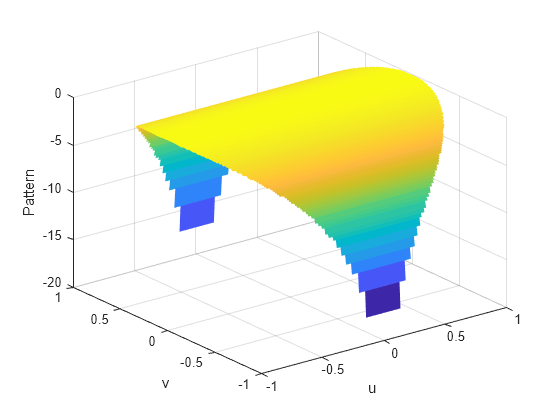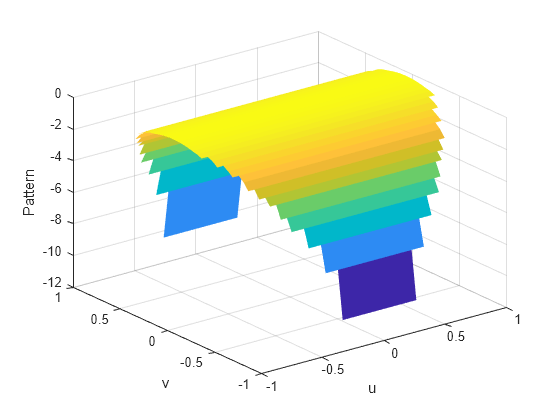azel2uvpat
Convert radiation pattern from azimuth/elevation form to u/v form
Syntax
Description
pat_uv = azel2uvpat(pat_azel,az,el)pat_azel in u/v space coordinates
instead of azimuth/elevation angle coordinates. pat_azel samples
the pattern at azimuth angles in az and elevation
angles in el. The pat_uv matrix
uses a default grid that covers u values from –1
to 1 and v values from –1 to 1. In this
grid, pat_uv is uniformly sampled with a step
size of 0.01 for u and v. The
function interpolates to estimate the response of the antenna at a
given direction. Values in pat_uv are NaN for u and v values
outside the unit circle because u and v are
undefined outside the unit circle.
Examples
Input Arguments
Output Arguments
More About
Extended Capabilities
Version History
Introduced in R2012a



